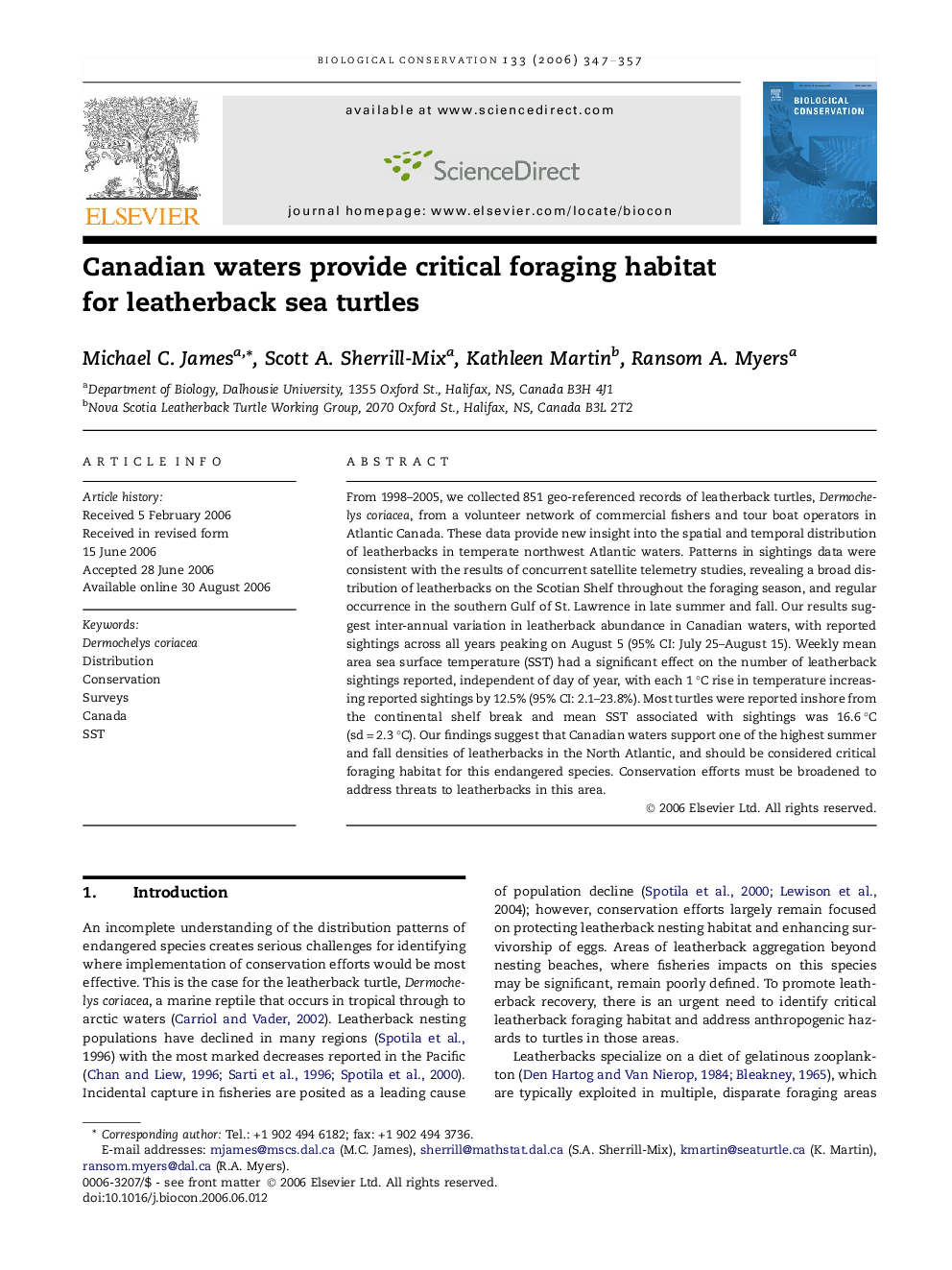| Article ID | Journal | Published Year | Pages | File Type |
|---|---|---|---|---|
| 4387531 | Biological Conservation | 2006 | 11 Pages |
From 1998–2005, we collected 851 geo-referenced records of leatherback turtles, Dermochelys coriacea, from a volunteer network of commercial fishers and tour boat operators in Atlantic Canada. These data provide new insight into the spatial and temporal distribution of leatherbacks in temperate northwest Atlantic waters. Patterns in sightings data were consistent with the results of concurrent satellite telemetry studies, revealing a broad distribution of leatherbacks on the Scotian Shelf throughout the foraging season, and regular occurrence in the southern Gulf of St. Lawrence in late summer and fall. Our results suggest inter-annual variation in leatherback abundance in Canadian waters, with reported sightings across all years peaking on August 5 (95% CI: July 25–August 15). Weekly mean area sea surface temperature (SST) had a significant effect on the number of leatherback sightings reported, independent of day of year, with each 1 °C rise in temperature increasing reported sightings by 12.5% (95% CI: 2.1–23.8%). Most turtles were reported inshore from the continental shelf break and mean SST associated with sightings was 16.6 °C (sd = 2.3 °C). Our findings suggest that Canadian waters support one of the highest summer and fall densities of leatherbacks in the North Atlantic, and should be considered critical foraging habitat for this endangered species. Conservation efforts must be broadened to address threats to leatherbacks in this area.
